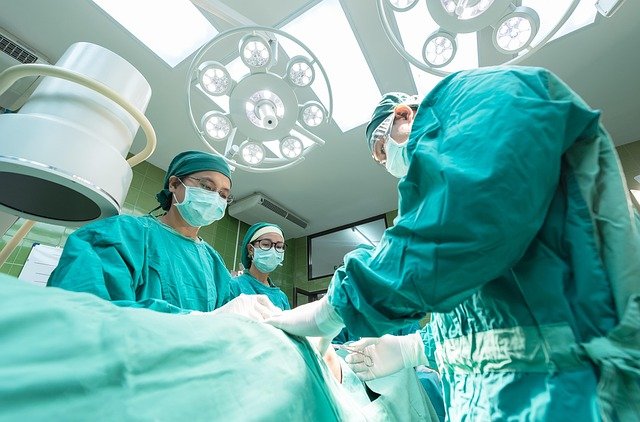Discover Rhinoplasty Surgery Options Available in Canada
Individuals residing in Canada who have an interest in rhinoplasty can benefit from understanding how the procedure is performed and what to anticipate during the process. This exploration includes the various types of rhinoplasty available and the distinct advantages each offers, providing valuable insights for informed decision-making.

Understanding Rhinoplasty Procedure and Its Benefits
Rhinoplasty involves reshaping the nose structure through surgical modification of bone, cartilage, and soft tissue. The procedure can reduce or increase nose size, change the angle between the nose and upper lip, alter the tip or bridge, narrow nostril width, or correct breathing problems related to structural defects.
The benefits extend beyond cosmetic improvements. Many patients experience enhanced self-confidence and improved facial proportions following surgery. For those with functional issues, rhinoplasty can significantly improve breathing capacity by correcting deviated septums or other structural abnormalities. The procedure typically takes one to three hours under general anesthesia, with most patients returning to normal activities within two weeks.
Recovery involves temporary swelling and bruising around the eyes and nose area. Initial results become visible once swelling subsides, though final results may take up to a year to fully develop as tissues settle into their new position.
Types of Rhinoplasty and Their Specific Advantages
Canadian surgeons perform several rhinoplasty techniques, each suited to different patient needs and anatomical considerations. Open rhinoplasty involves making an incision across the columella (the tissue between nostrils), providing surgeons with comprehensive visibility and access to nasal structures. This approach proves particularly effective for complex cases requiring significant structural changes.
Closed rhinoplasty utilizes incisions made entirely within the nostrils, leaving no visible external scarring. This technique works well for patients requiring minor to moderate adjustments and typically involves shorter recovery periods with reduced swelling.
Revision rhinoplasty addresses complications or unsatisfactory results from previous nose surgeries. These procedures often prove more complex than primary rhinoplasty, requiring specialized expertise to achieve desired outcomes while working with previously altered tissue.
Ethnic rhinoplasty focuses on maintaining cultural and ethnic characteristics while achieving aesthetic goals. This specialized approach respects natural nose shapes and proportions specific to different ethnic backgrounds, ensuring results appear harmonious with individual facial features.
Preparing for Your Rhinoplasty Journey in Canada
Preparation begins with selecting a qualified plastic surgeon certified by the Royal College of Physicians and Surgeons of Canada. Research potential surgeons’ credentials, experience, and before-and-after photographs of previous rhinoplasty patients. Schedule consultations with multiple surgeons to discuss expectations, surgical approaches, and potential outcomes.
During consultations, surgeons evaluate nasal anatomy, discuss realistic expectations, and explain specific techniques recommended for individual cases. Computer imaging may demonstrate potential results, though actual outcomes can vary. Patients should openly discuss medical history, current medications, and any previous nasal surgeries or injuries.
Pre-operative preparations include avoiding certain medications that increase bleeding risk, arranging time off work, and organizing post-surgical support. Patients must stop smoking several weeks before surgery, as tobacco use significantly impairs healing processes. Following pre-operative instructions carefully helps ensure optimal surgical outcomes and recovery experiences.
Post-operative care involves keeping the head elevated, avoiding strenuous activities, and attending all follow-up appointments. Surgeons provide detailed recovery instructions specific to each patient’s procedure and healing progress.
| Procedure Type | Average Cost Range (CAD) | Recovery Time |
|---|---|---|
| Primary Rhinoplasty | $8,000 - $15,000 | 2-3 weeks |
| Revision Rhinoplasty | $12,000 - $20,000 | 3-4 weeks |
| Functional Rhinoplasty | $6,000 - $12,000 | 2-3 weeks |
Prices, rates, or cost estimates mentioned in this article are based on the latest available information but may change over time. Independent research is advised before making financial decisions.
Choosing Quality Care in Canada
Canadian healthcare regulations ensure rhinoplasty procedures meet strict safety and quality standards. Provincial medical boards oversee surgeon licensing and facility accreditation, providing patients with additional security when selecting surgical providers. Many procedures are performed in accredited surgical centers or hospitals equipped with modern technology and emergency capabilities.
Patients should verify their chosen surgeon’s board certification, facility accreditation, and malpractice insurance coverage. Reading patient reviews and requesting references from previous rhinoplasty patients can provide valuable insights into surgeon competence and patient satisfaction levels.
The decision to undergo rhinoplasty requires careful consideration of personal goals, realistic expectations, and commitment to recovery processes. Canadian patients benefit from access to skilled surgeons, regulated medical facilities, and comprehensive post-operative care systems that support successful surgical outcomes and patient satisfaction.
This article is for informational purposes only and should not be considered medical advice. Please consult a qualified healthcare professional for personalized guidance and treatment.




